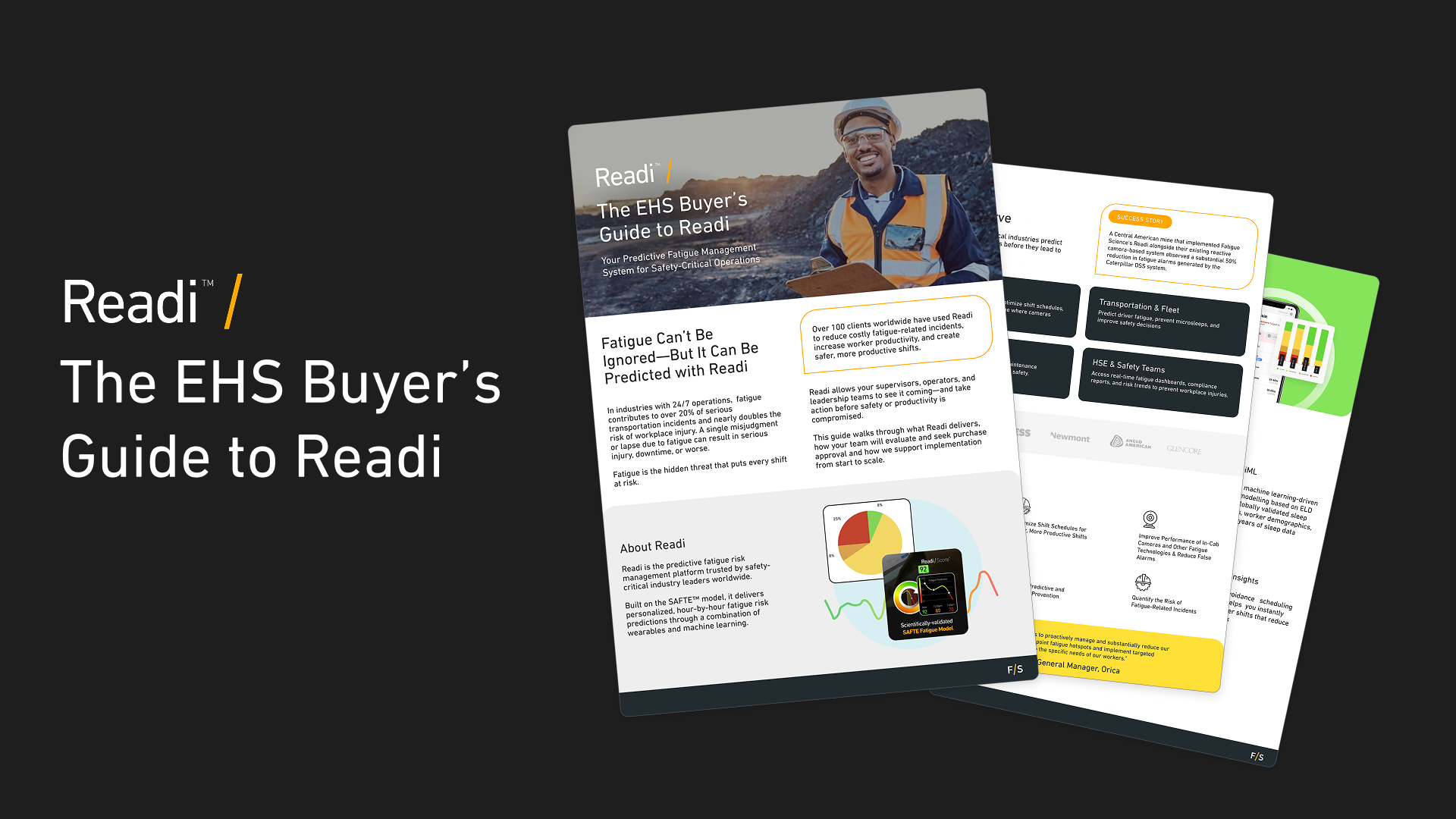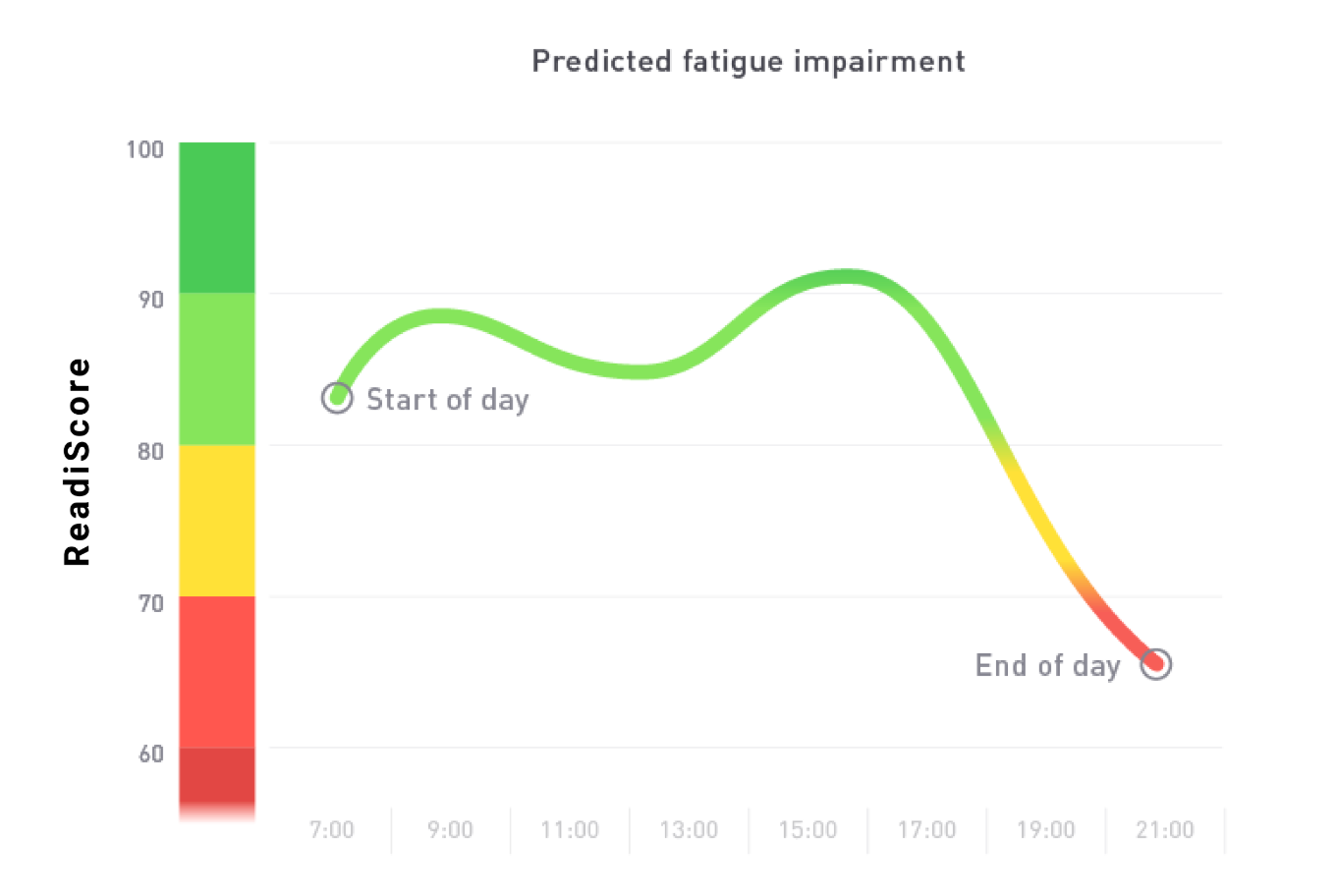Garmin wearables now integrate with Readi to measure and quantify the impact of sleep on human performance
 Fatigue Science, a global leader in providing predictive human performance data in elite sports, military and heavy industry, is pleased to announce that its application Readi now integrates with Garmin wearable devices. With tens of millions of active users globally, Garmin is one of the leading sleep capture wearable brands. Readi’s robust API is designed to support a diverse ecosystem of 3rd party devices, and this latest integration with Garmin follows the recent introduction of Readi’s compatibility with Fitbit and is another step towards building out this extensive ecosystem.
Fatigue Science, a global leader in providing predictive human performance data in elite sports, military and heavy industry, is pleased to announce that its application Readi now integrates with Garmin wearable devices. With tens of millions of active users globally, Garmin is one of the leading sleep capture wearable brands. Readi’s robust API is designed to support a diverse ecosystem of 3rd party devices, and this latest integration with Garmin follows the recent introduction of Readi’s compatibility with Fitbit and is another step towards building out this extensive ecosystem.
The recently released, third-generation Readi app also continues to integrate seamlessly with our proprietary ReadiBand™ wearable solution, which is widely utilized across industry, military and elite sports to improve human performance and safety. Readi evolved from our Readiband app and not only predicts the cumulative impact of sleep on waking hours but also puts those predictions into a meaningful visual context as it relates to the day ahead.
Through Readi, Garmin users can view both the real-time and projected impact of their cumulative sleep on their cognitive effectiveness and reaction time. While Garmin users have been able to track their sleep retrospectively, Readi now provides them with the ability to see the impact of that sleep, now and looking forward in time.
Readi is built on SAFTE™, the world’s leading biomathematical sleep and fatigue model, and is designed specifically for elite athletes, military operators and industrial workforces. Elite athletes and military operators use data from Readi to ensure they’re performing at optimal levels when it matters most. Likewise, industrial workers use Readi to optimize performance, as well as to become aware of periods of critical fatigue risk in their workday ahead, and to receive alerts before they face these risks.
“Leveraging Readi’s hardware-agnostic architecture, the integration with Garmin expands our reach into markets where Garmin devices have secured a strong foothold such as professional & amateur sports and the military,” said Andrew Morden, CEO of Fatigue Science. “Together with Garmin devices, Readi provides scientifically-validated insights into the cumulative effects of sleep on waking hours, no longer just looking backwards on how well one slept, but now looking forward to understand how well one will perform in the day ahead.”
Fatigue Science will now be offering the Garmin option to its customers alongside the option to use Fitbits and the ReadiBand. While Readi is compatible with all Garmin devices, Fatigue Science recommends selecting a Garmin device that offers heart rate tracking in order to capture more accurate sleep data.




